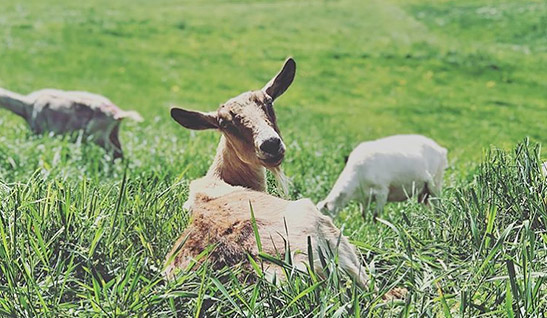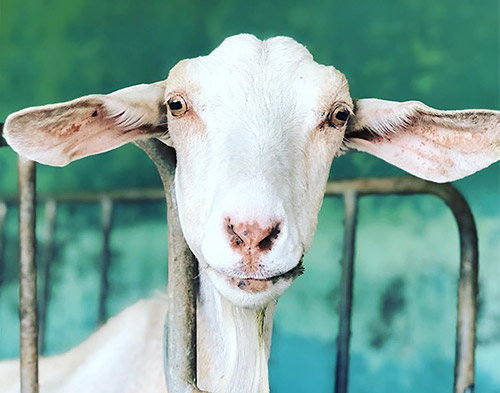Using RFID to Track a Goat Herd’s Health
Cory Spencer of Haltwhistle Cheese runs a 150-head goat dairy on Vancouver Island in British Columbia. One problem he often encounters is that most technology for dairy farmers in North America is designed for cows, not goats. Due to the specific needs of goats and their smaller size, this means most commercially available technology doesn’t work for his needs, and what is available is expensive.

PROJECT REQUIREMENTS
- Inexpensive solution
- Open source
- Small footprint to fit goats
FEATURED PRODUCTS
When Cory needed a way to automate the feeding of his herd, he turned to RFID products from SparkFun. The affordability of RFID, and the availability of open source library support for various readers, made the choice easy.
“I’m developing an RFID-based feeder that will dispense a predefined amount of grain to each goat at various points during the day,” he said. “There will be a stall set up that the goats can voluntarily enter, at which point an RFID reader will scan a unique RFID tag associated with each goat, and a Raspberry Pi will check to determine if the goat is eligible to have grain dispensed. If so, an auger attached to a motor will be activated, dispensing a preset amount of grain.”
Cory has larger plans for his RFID project than simply using it to feed his goats, and plans to use the framework as the basis for future projects at his dairy. For phase two of this project, Cory plans to focus more on the health of individual goats, as well as the health of the herd overall.

Good looking goat.
“I may only have a couple minutes per day with each animal to perform a health assessment. Having some automated tools that are able to provide support throughout the day and feed me data automatically on the herd helps to ensure that I’m getting the bigger picture of herd health, and can act early on it.”
He plans to begin by setting up a deep learning camera to provide facial recognition of each goat in his herd as they enter the stall. From there, he plans to use an infrared camera to take the temperature of the goat’s eyes, which has been shown to be positively correlated as a stress/health indicator. This could potentially provide an early flag that a particular goat may be sick and needs treatment.
Another camera mounted above the goat feeder would be used to take photos of the goat’s backs, which can then be used to analyze their body condition. Very low scores may indicate health problems such as poor nutrition or parasitic worms, while high scores indicate that the goat is consuming too many calories and the ration can be reduced.
As his business grows, the need for this type of technology grows with it.
“As our herd size grows, my one-on-one time with our animals decreases,” he said. “I may only have a couple minutes per day with each animal to perform a health assessment. Having some automated tools that are able to provide support throughout the day and feed me data automatically on the herd helps to ensure that I’m getting the bigger picture of herd health, and can act early on it.”